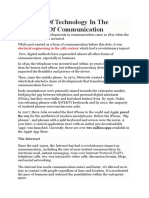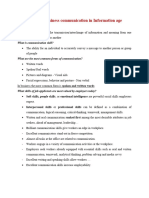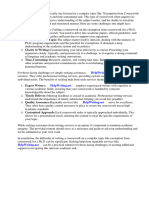0% found this document useful (0 votes)
38 views13 pagesThe Future of Communication
The document discusses the evolution of business communication from traditional methods to modern AI-powered tools and digital platforms. It highlights emerging trends such as omnichannel communication, remote work integration, and the impact of technology on efficiency and collaboration. Additionally, it addresses challenges like data privacy and cultural barriers while exploring future possibilities like VR, blockchain, and increased automation.
Uploaded by
gowdaindrajeet2006Copyright
© © All Rights Reserved
We take content rights seriously. If you suspect this is your content, claim it here.
Available Formats
Download as PDF, TXT or read online on Scribd
0% found this document useful (0 votes)
38 views13 pagesThe Future of Communication
The document discusses the evolution of business communication from traditional methods to modern AI-powered tools and digital platforms. It highlights emerging trends such as omnichannel communication, remote work integration, and the impact of technology on efficiency and collaboration. Additionally, it addresses challenges like data privacy and cultural barriers while exploring future possibilities like VR, blockchain, and increased automation.
Uploaded by
gowdaindrajeet2006Copyright
© © All Rights Reserved
We take content rights seriously. If you suspect this is your content, claim it here.
Available Formats
Download as PDF, TXT or read online on Scribd
/ 13





















































































